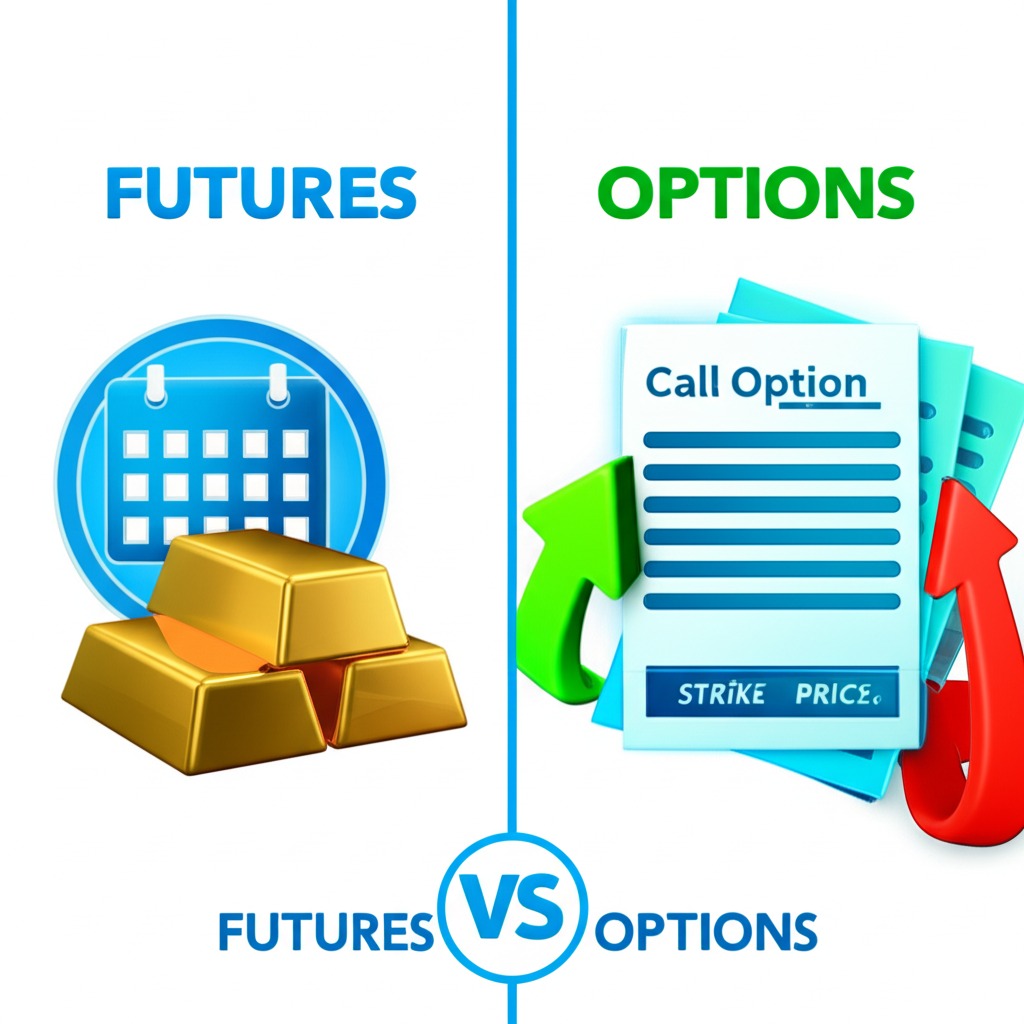Ever wished you could profit even when the market falls? Or protect your portfolio from a sudden crash? Welcome to the world of Futures and Options — powerful financial tools that help traders manage risk and multiply returns, even in uncertain markets.
Quick Recap from Previous Chapter:
In the previous article, we explored Stocks (Equity) – buying a share means owning a small part of a company. While stocks are perfect for long-term investing, they can be volatile in the short term. That’s where Derivatives like Futures and Options come in – they derive their value from underlying assets like stocks or indices and are mainly used for hedging or speculation.
What are Derivatives?
- Derivatives are financial contracts whose value is based on an underlying asset (like a stock, commodity, or index).
- In the stock market, the two most commonly used derivatives are:
- Futures
- Options
Futures vs Options: Quick Comparison
| Feature | Futures | Options |
|---|---|---|
| Obligation | Buyer & seller both are obligated | Buyer has right, not obligation |
| Risk | Higher (no premium, full exposure) | Lower (limited risk for buyer) |
| Premium Paid | No premium | Buyer pays a premium |
| Margin Requirement | Yes (usually 20-30%) | Only seller (writer) pays margin |
| Profit/Loss Potential | Unlimited gains/losses | Limited loss for buyer, unlimited gain |
| Ideal For | Advanced traders, hedgers | Retail traders, hedgers, speculators |
1. Futures Contract
A Futures contract is an agreement to buy or sell an asset at a predetermined price on a specific future date.
✅ Key Features:
- Traded on stock exchanges (like NSE)
- Standardized contracts
- High leverage, but higher risk
🧠 Example:
If Nifty is at 22,000 and you think it will rise, you can buy 1 lot of Nifty Futures (usually 50 units).
- If Nifty rises to 22,500:
- Profit = (22,500 – 22,000) × 50 = ₹25,000
- But if Nifty falls to 21,800:
- Loss = (22,000 – 21,800) × 50 = ₹10,000
2. Options Contract
An Options contract gives the buyer the right, but not the obligation, to buy/sell an asset at a specific price before a specific date.
🧩 Two Types:
✅ Key Features:
🧠 Example:
You buy a Nifty 22,000 Call Option for ₹100 premium.
- If Nifty goes to 22,300:
- Intrinsic value = 300
- Profit = (300 – 100) × lot size (say 50) = ₹10,000
- If Nifty falls below 22,000:
- Loss = Premium = ₹5,000 (100 × 50)
Use Cases of Futures & Options
🔐 Hedging:
- Protect your portfolio from adverse market movements.
- Example: You own stocks worth ₹5 lakhs. You can buy a Put Option to protect yourself if the market falls.
🎯 Speculation:
- Traders use derivatives to bet on price movement of stocks or indices.
- Example: Buy Nifty Futures if you believe Nifty will rise.
💸 Arbitrage:
- Take advantage of price differences in different markets (cash vs futures).
Important Points to Remember
- Futures have unlimited risk – not suitable for beginners.
- Options are safer for beginners if you’re just buying them (not writing/selling).
- Time Decay works against option buyers but for option sellers.
- Margin requirements and liquidity are crucial in trading derivatives.
Summary
| Aspect | Stocks (Equity) | Futures & Options |
|---|---|---|
| Ownership | Yes | No (only contracts) |
| Risk | Moderate | High (Futures), Controlled (Options) |
| Purpose | Investing | Hedging / Speculation |
| Capital Required | Full price | Partial margin or premium |
💬 Final Thought:
Futures and Options are powerful, but they are double-edged swords. They allow you to trade bigger with less capital, but can magnify your losses too.
If you’re just starting out, it’s better to first learn using small positions or paper trading before you put real money on the line.
If you’re starting, begin with small capital, learn with demo trading, and understand both the technical and emotional side of trading.
Start Your Trading Journey